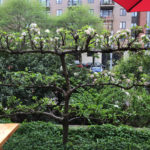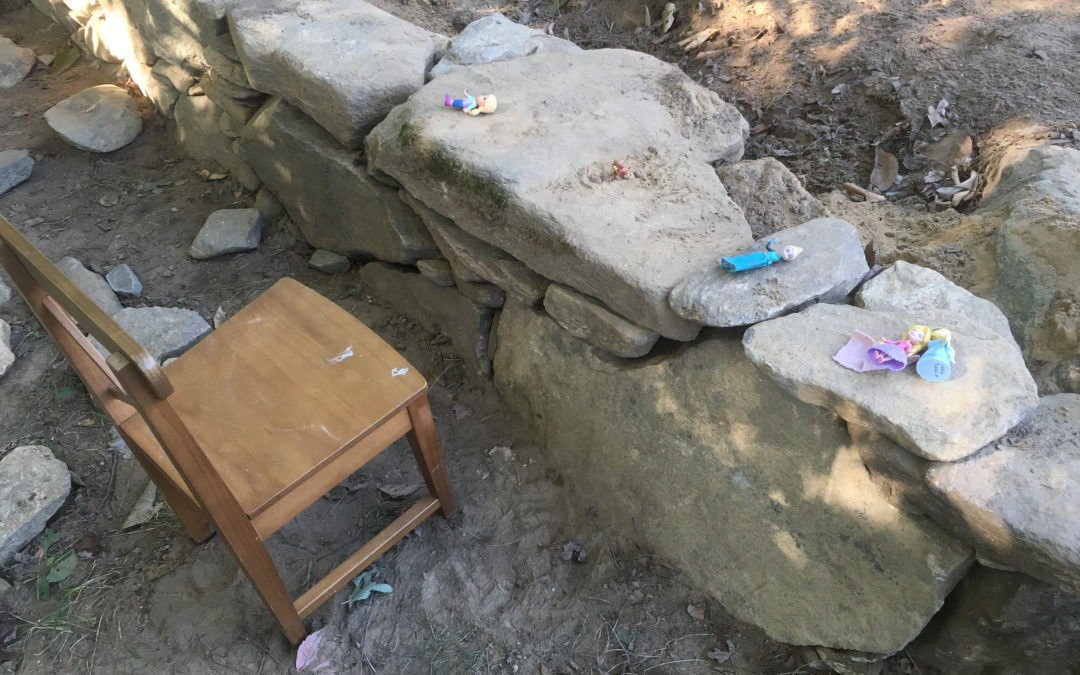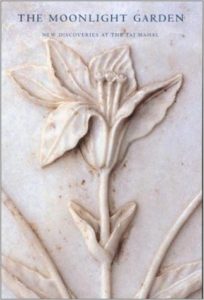

Native Plants with Bluestone Flag Path
Drought tolerant, sun-loving native plants replace a patchy lawn between the house and garage. Plants include: inkberry and winterberry hollies, prairie dropseed, June grass, ivory sedge, bluets, hairy beardtongue, stiff aster, and bird’s foot violet, three-toothed cinquefoil, bearberry, wild bleeding heart, nodding onion, heath aster “Snow Flurry”, threadleaf blue star, yarrow, blue false indigo, blue salvia, tall larkspur, New Jersey tea, wild quinine, Eastern bee balm, and wild bee balm. Carlisle, MA
- Before, Image 1
- Before, Image 3
- Before, Image 2
- Design
- Final design
- Bluestone Path
- Symphyotrichum ericoides “Snow Flurry” – small, but blooming happily.
- Dicentra eximia – more sun-loving than you’d expect..
- Bluestone path with drought tolerant native plants, 2 months after installation.

Clean Water Is Healthy Water
Stormwater management is an important element that separates sustainable and ecological landscape design from conventional, unmanaged landscaping. Stormwater runoff is often contaminated with various substances like fertilizers, pesticides, road salt, oil from cars, trash, sediment, grass clippings, pet waste, and farm waste. These pollutants make their way from yards, driveways, and parking lots into water as rain falls and runs through the landscape, but then it keeps going and eventually makes its way into rivers, lakes, ponds, vernal pools, and oceans.
This pollution affects our quality of life. Many rivers and lakes aren’t clean enough to swim in and fish caught from them can’t be safely eaten. Even many of the the ponds and lakes that offer swimming need to be closed frequently due to dangerous algae blooms that result from the water having too many nutrients, an process called eutrophification. Fertilizers from lawns and gardens get washed into the water and create the perfect growing conditions for bacteria and algae overgrowth. Pollutants also find ways into wells and public water supplies, increasing the cost of maintaining safe drinking water. Research published in the American Journal of Public Health found that “the estimated annual cost of waterborne illness is comparable to the long-term capital investment needed for improved drinking water treatment and stormwater management.” Properly managing stormwater pollution can directly impact public health and decrease costs associated with treating waterborne illnesses.
Below is one of the first simple, usable criteria I have seen for determining a site’s level of risk for adequate stormwater management (from Penn State; adapted from the Univ. of Nebraska). Tools like this should be adopted to improve awareness about the quality and quantity of stormwater runoff in our communities. By identifying high risk conditions and implementing some simple strategies (think downspout redirection into gardens, choosing deep-rooted plants, decreasing lawn area, and building raingardens), we can decrease the amount of contaminated water running off a site. Whatever water does leave the site could be much cleaner, and clean water is healthy water for us all.
Water Management/Runoff Scorecard:
Espaliered Native Plants: The Formal Garden

Two-year old red chokeberry being trained as espalier.

Espalier Shapes

Espaliered Apple Tree, Portland, OR

UBC Botanincal Garden Vancouver, BC

Chicago Botanic Garden

Stones & Castles

Mosaic Detail in Granite Patio
Sometimes, a work space turns into someone else’s play space. This wall is the foundation for a sugar shack, but on this particular summer afternoon, it was the princesses’ castle wall. Planning for family activities is an important part of landscape design. Sometimes people focus solely on creating specific play areas for the kids, but often, just having an interesting space is what kids need.
Paths can twist and turn, as an invitation to see what is around the corner or the future site of a surprise attack. Elevation changes offer children a chance to experience viewing the world from a different perspective. Water features are possibly a place to splash, feel the coolness, see reflections, and watch insect, amphibians, and fish throughout their life cycles. Stones of different sizes, colors, and textures can inspire thoughtful inquiry or construction.
Diverse plant choices provide a variety of heights, textures, colors, smells, and tastes. Different plant heights allow kids to feel both big and small. Big plants provide hiding places where kids can see, but not be seen. Rhododendrons and lilacs become forts on the inside, fallen tree trunks become bridges or lookouts, vines create tents. Groundcovers are a carpet from which to watch the leaves flutter or clouds race across the sky. Small plants could become troll and fairy houses, or just the place where chipmunks disappear and reappear.

Swamp milkweed with crab spider
A variety of colors can help encourage exploration and discovery. Have you even taken the time to notice what color of plants attract what type of pollinators? Blooms, fruits, and leaf colors herald the change of seasons. Different textures of plants allow kids to experience plants by sight and touch. Small, large, broad and strappy leaves can be as inspiring as the soft, velvety feel of Canadian ginger and lamb’s ear. The leathery leaves of mayapples and their flowers that can only be viewed by peeking under the umbrella-like leaves (and finding out the fruits are food for Eastern box turtles). There’s the prickly and sharp, dried purple coneflower seedhead or the smooth, silky-soft feeling of northern sea oats or the leaves of threadleaf bluestar. The rough leaves of peppermint and sage, the smooth, brittle crush of skunk cabbage, and sweet woodland phlox provide exploration through scent.

Lowbush blueberry blooms
Edible plants like blueberries, wild strawberries, thimbleberries, and beach plums, elicit sweet memories of summer; the tartnesss of cranberries, the sweet vanilla-banana flavor of paw paw and savory flavors of herbs can surprise. Children can learn how fruits, seeds, and herbs are grown and how they can be added to meals for nutrition and increased flavor. There are also teachable moments about how all plant fruits are not edible, and children can learn to appreciate the knowledge that these fruits provide food for other creatures, even if not for humans.
There are so many different ways that landscapes and plant choices provide playful, sensory, and educational opportunities for children. Unstructered play and exploration of nature through observation, touch, smell and taste, including the nature in our landscaped yards, balconies, and porches, is a great way for children to experience the world.

Gray treefrog
Dancing in the Moonlight

Dicentra cucullaria (Dutchman”s breeches)
Nighttime in the garden is a magical place, with silverly moonlight caressing leaves and flowers as they sway in a light breeze, the flowers’ fragrance meanders then lingers with the music of nocturnal creatures. The transformation made by moonlight on plants and water and the coolness of the night made moon gardens a popular feature in hot climates. Gardeners chose plants that glowed in the moonlight or infused the air with enticing scents, adding water features that mirrored the moon and stirred silver streams and droplets here and there. Moon gardens became popular in the 1920’s and 1930’s in England and the U.S., but they were somewhat forgotten as people spent more time indoors and the great American lawn replaced flower gardens.
I’ve always had a fascination with moon gardens, though, and I recently began to wonder what native plants would be suitable for nighttime interest. Below is a partial list of North American native plants, predominantly of the Northeast, that could enchant both the moon and you with their blooms and scents. These plants also provide a host of ecological benefits to native pollinators, other insects, and wildlife. As always, choosing the right plants for your site can help decrease water use, maintenance, erosion, and the heat island effect, while providing increased beauty.
Spring: Actaea recemosa and A. pachypoda, Dicentra cucullaria and D. eximia ‘Alba’, Houstonia caerulea, Phlox divaricata and P. stolonifera, Tiarella cordifolia, Trillium grandiflorum and T. luteum, Magnolia virginiana and M. macrophylla, Halesia monticola, H. tetraptera, and H. carolina, Cephalanthus occidentalis, Chionanthus virginicus, Cornus florida, Aronia arbutifolia and A. melanocarpa, Kalmia latifolia, Rhododendron groenlandicum.
Summer: Allium cernuum and A. tricoccum, Anemone virginiana, Aruncus dioicus, Baptista alba, Echinacea purpurea alba, Geranium maculata, Gillenia trifoliata, Hydrangea quercifolia, Koeleria macrantha, Liatris spicata alba, Maianthemum racemosum and M. stellatum, Phlox paniculata, Physostegia virginiana, Polygonatum biflorum, Rosa blanda, Lobelia cardinalis “Alba”, Ceanothus americanus, Clethra alnifolia, Itea virginiana, Rhododendron arborescent, Viburnum lantanoides, V. lentago, and V. nudum, and Viola walteri ‘Silver Gem’.
Late summer/autumn: Achillea millefolium, Actaea rubifolium, Ageratina altissima, Agrostis scabra, Amsonia tabernaemontana, Andropogon virginicus, Ascelpias verticillata, Clematis virginiana, Doellingeria umbellale, Eurybia divaricata, Heuchera villosa, Hibiscus moscheutos, Monarda punctata, Muhlenbergia capillaris, Nymphaea odorata, Panicum virgatum, Pycnanthemum tenuifolium and P. virginianum, Sanguisorba canadensis, Symphyotrichum erecoides.
 If you are interested in reading more about moon gardens and the discovery of the gardens that existed at the Taj
If you are interested in reading more about moon gardens and the discovery of the gardens that existed at the Taj
Mahal in the 1600’s, read The Moonlight Garden: New Discoveries at the Taj Mahal, by Elizabeth B. Moynihan. A short history of moon gardens can be found in this post from Don Statham Design in New York.
















